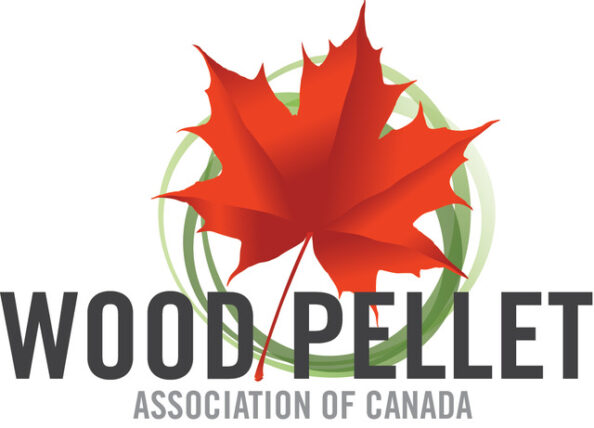 I can’t believe it has been over a decade since the Wood Pellet Association of Canada’s (WPAC’s) Safety Committee was established. Our initial focus was combustible dust in response to tragic sawmill explosions in British Columbia. Over the years, activities have expanded to all health and safety matters.
I can’t believe it has been over a decade since the Wood Pellet Association of Canada’s (WPAC’s) Safety Committee was established. Our initial focus was combustible dust in response to tragic sawmill explosions in British Columbia. Over the years, activities have expanded to all health and safety matters.
The committee’s mission is “to improve the wood pellet industry’s collective safety performance, earn a reputation with regulatory authorities and the public as an industry that is highly effective at managing safety, and learn and share best practices regarding safety.” As we enter 2025, I want to reflect on a few past successes and share our Work Plan for the year.
Past initiatives
I am very proud of the WPAC Safety Committee’s work over the past 10 years. We have developed an ongoing, open, collaborative relationship with WorkSafeBC and the BC Forest Safety Council—one that is built on trust. We have even taken our learnings here in Canada and shared them with customers in Japan, holding two safety sessions focused on safe biomass material handling and storage in 2023. Other successful initiatives included:
- Critical Control Management, which was our first sustained Process Safety Management (PSM) initiative. It helped improve understanding of operational hazards and ensure the effectiveness of safeguards. It was also the first initiative where Bowtie analyses were used in the industry. They are now developed for most plant processes.
- The Inherently Safer Design project focused on the elimination of hazards and treatment of hazards at the source rather than relying on only add-on equipment and procedures.
- Deflagration Isolation was designed to improve pellet industry practices regarding equipment isolation, with an eye on minimizing the impact of the potential of combustible dust fires, explosions and deflagrations within wood pellet plants.
- The Combustible Gas report summarizes the key actions plan operators can take to manage the risk of combustible gas in drum dryers.
- wpaclearning.com is a free online operator training program developed by operations for operations to provide training and improve safety competency. I encourage everyone in wood pellet operations to use the program.
Ongoing and future initiatives
WPAC’s Safety Committee continues to listen to the Canadian wood pellet sector and focus on activities that reflect their needs. We have several ongoing initiatives planned for 2025 and a few new ones.
Process Safety Management (PSM) is a core focus for the WPAC Safety Committee over the next five to seven years. Around the world, PSM is becoming key to worker safety and managing risk. It protects personnel, equipment and production uptime and is associated with lower maintenance costs, insurance and capital.
The PSM initiative has been broken into three phases so it is more accessible and achievable. In 2025, the Committee will determine key performance indicators for the entire PSM implementation process to establish what success looks like. Focusing on Phase 1 implementation, we will roll out gap analysis worksheets to all operations.
PSM is a three-phased process. In 2025, WPAC’s Safety Committee will focus on implementing Phase 1 elements.
Every workplace has unique hazards that can impact the safe operation of mobile equipment. These hazards must be identified, assessed and controlled to minimize the risk of damage or injury. In 2025, the Committee will hold bow-tie analysis sessions and a symposium on Mobile Equipment Safety to understand the risks associated with mobile equipment in wood pellet plants.
Drum dryers present the risk of fires and explosions due to combustible dust and conditions that can lead to the generation and accumulation of combustible gas. A symposium held in 2024 initiated the Rotary Drum Dryer Safety project, which led to a dedicated Working Group reviewing past incidents and developing enhanced, safer operating procedures. The Group will publish a report and share its findings in 2025.
WorkSafeBC has proposed amendments to part 6, Substance Specific Requirements of the Combustible Dusts section of the Occupational Health and Safety Regulation. To help wood pellet companies understand these proposed changes, the Safety Committee will summarize and share them and prompt operations to assess their readiness to implement them.
We will continue to profile Safety Heroes every two months to acknowledge employees who support safety. You can submit nominations at pellet.org.
The Safety Committee also plans to hold our annual Wood Pellet and Biomass Safety Summit, where we will dive deeper into many critical safety issues affecting the industry today. Stay tuned for an announcement of a location and dates.
 New to 2025: Along with the continuing safety initiatives listed above, we will review the impacts of previous safety initiatives, take a closer look at mental health and musculoskeletal injuries (MSI) and update winter fibre truck loading/unloading standard operating procedures.
New to 2025: Along with the continuing safety initiatives listed above, we will review the impacts of previous safety initiatives, take a closer look at mental health and musculoskeletal injuries (MSI) and update winter fibre truck loading/unloading standard operating procedures.
We warmly welcome new members to the WPAC Safety Committee. We meet on the second Wednesday of every month at 11 am (PST). Members include the BC Forest Safety Council, the wood pellet and biofuel industry and academic institutions. To read the Work Plan and sign up, please visit pellet.org.